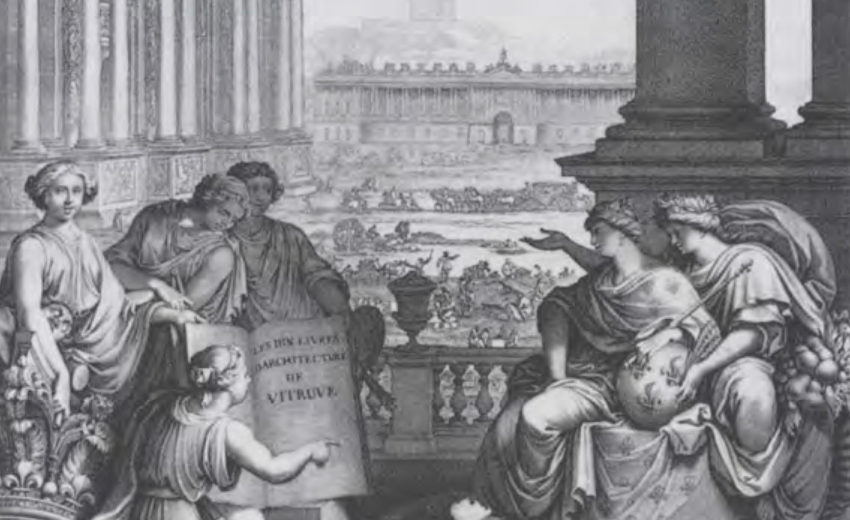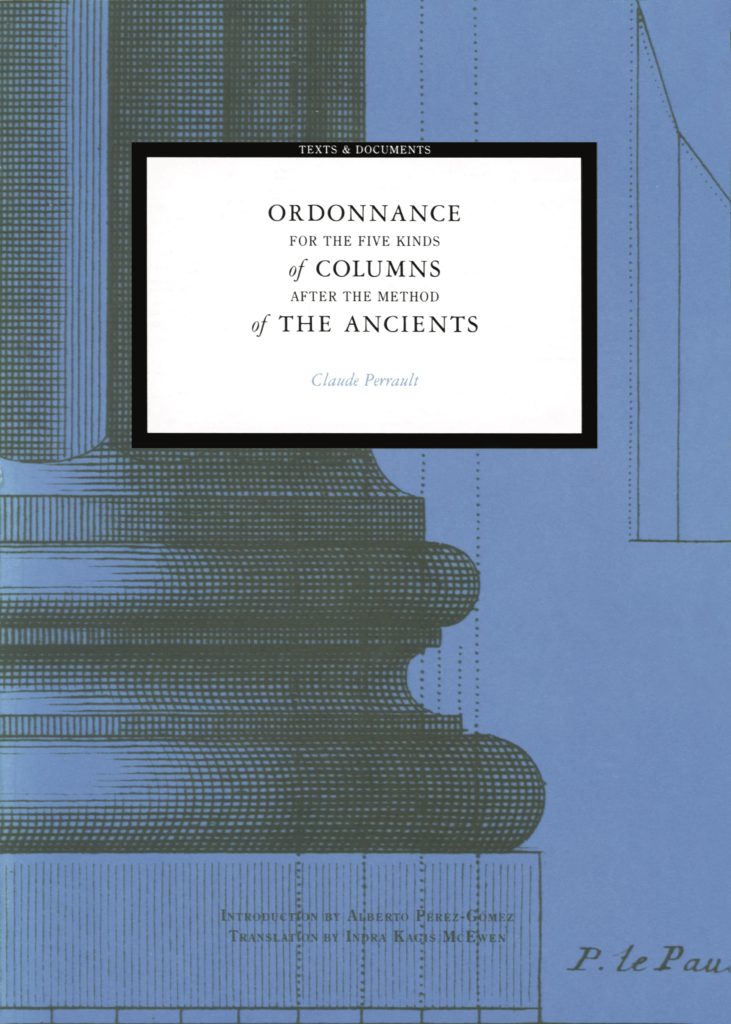
Perrault, Ordonnance For The Five Kinds Of Columns After The Method Of The Ancients
A physician, physicist, Cartesian, and “Modern” in the famous querelle des Anciens et des Modernes, Claude Perrault acquired architectural immortality with his design (sometimes challenged) and construction of the east wing of the Louvre, long acknowledged to be one of the paradigms of French classicism. But perhaps a greater achievement was his translation of The Ten Books of Architecture by the classical Roman theorist Vitruvius, published in 1673. The Latin author was not only made to “speak French” in a most eloquent fashion, but he was also interpreted. Perrault’s scrupulous annotation, which nearly envelops the lone surviving architectural treatise from antiquity, has never been excelled in its scholarship and intellectual stamina. On the basis of this learned second discourse, Claude Perrault began to compose the first post-Renaissance treatise on architecture, one in which the rules of architectural design were now to be determined not by apodictic ancient precedents but by reason and—above all—by a variable national taste. The Ordonnance for the Five Kinds of Columns after the Method of the Ancients, 1683, was the culmination of Perrault’s efforts. A relative theory of beauty was proposed: a gage of battle and affront to the absolute premise of the newly founded Académie Royale d’Architecture, headed by François Blondel. The latter reacted vociferously and quite bitterly. The “scientist” Perrault died in 1688 of a wound received while dissecting a camel.
Download
Perrault_Ordonnance For The Five Kinds Of Columns After The Method Of The Ancients.pdf
Perrault_Ordonnance For The Five Kinds Of Columns After The Method Of The Ancients.txt
Perrault_Ordonnance For The Five Kinds Of Columns After The Method Of The Ancients.html
Perrault_Ordonnance For The Five Kinds Of Columns After The Method Of The Ancients.jpg
Perrault_Ordonnance For The Five Kinds Of Columns After The Method Of The Ancients.zip



